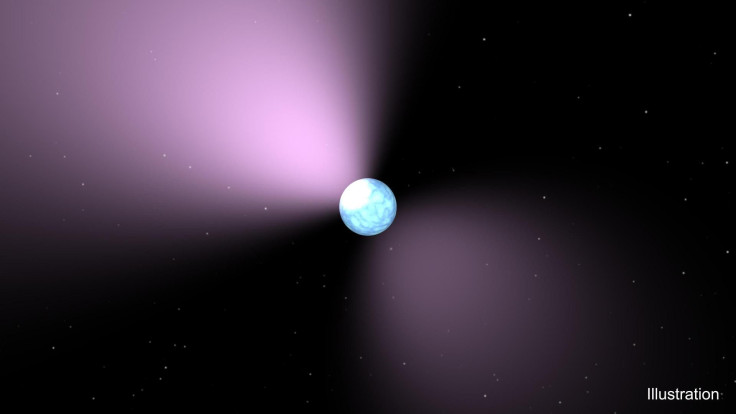Milky Way Pulsar Orbits Black Hole: Lighthouse Star In Sagittarius Is First Of Its Kind

Astronomers say they have discovered a hidden black hole in the Milky Way galaxy, one that has a mass 7,500 times greater than the sun.
The University of Manchester announced the finding, which is in the constellation Sagittarius, about 26,000 light years away from us. There’s a cluster of old stars there and the astronomers say a medium-sized black hole is at its center.
Read: Supermassive Black Hole Farts Out Baby Stars
Orbiting the black hole is a pulsar — the highly dense remains of a once-massive star that rotates super quickly and emits electromagnetic radiation. They are often compared to lighthouses, for the same reason they are called pulsars: They appear to blink or pulse in the night sky. In the case of the pulsar PSR B1820-30A orbiting the newly found black hole, it completes a rotation in just milliseconds.
“Pulsars like PSR B1820-30A act as fantastically accurate clocks and allow us to determine precisely their distance from the Earth,” Manchester professor Andrew Lyne said in the university statement. “The pulsar is therefore very sensitive to any motion arising from the gravity of other nearby massive objects, such as black holes.”
Scientists already knew about the pulsar, but getting evidence of the black hole means the pulsar has become the first to be confirmed orbiting one, the university said. And any finding of an intermediate-sized black hole is crucial because it is a “missing link” on the scale of black holes, which has stellar-mass black holes on the small end and supermassive black holes on the large end.
“It is generally thought that they could be formed by the direct collapse of very massive primordial stars or successive mergers of stellar-mass black holes and runaway collisions in dense young star clusters,” Manchester’s Benetge Perera said in the statement. “This discovery provides important input to our understanding of how intermediate-mass black holes and the [star] clusters themselves form and evolve.”
Scientists believe black holes form when stars collapse, which would explain why they have such high masses in such compact spaces. That density creates a gravitational pull that’s so strong, not even light can escape its grasp. If a human were to come into contact with one, it would rip you into trillions of pieces.
They may sound hard to miss, but astronomers are finding new ones all the time and learning more about them. A team recently found three supermassive black holes at the centers of tiny galaxies in the constellation Virgo. The galaxies are known as ultracompact dwarf galaxies, and are probably all that is left of much larger systems that were eaten up and destroyed by collisions with other galaxies — a common occurrence in outer space. After these discoveries, scientists now think a supermassive black hole at the center of a small galaxy is also common.
See also:
Two Supermassive Black Holes Found In Remains of Destroyed Galaxies
© Copyright IBTimes 2024. All rights reserved.











